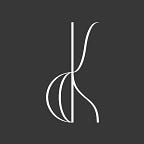First contact with electro-acoustic cupolas
Electro-acoustic handpans are on their way to change how we perceive the instrument. In January of 2019, Meridian Handpans announced their first model with a built-in pickup system.
Making metal music
When I first got into cupolas around year 2011, I felt I was done with electronic sounds. I felt disconnected from them, because I didn’t have tactile enough instrument to play them. Yet, I was still hungry for new and exciting acoustic sounds, and the sound of the handpan felt like a hidden treasure.
However, coming from experimental sound art and playing in rock bands, one of the first things I did with my first cupola was to record it on my computer and add tons of reverb and distortion. It sounded great, although my aim then was still to focus more on acoustic sounds.
Later I combined the cupola with electronics, playing it through Ableton Live on stage. However, when playing with loud backing tracks, I often ran into problems with feedback or poor signal. I have been using Shure Beta 98H/C clip-on condenser mics with my instruments and they work well as long as the monitoring works. However, too often I have ended up with too much feedback noise on stage.
Since last year I have been working towards a new setup that puts emphasis on live sampling and improvisation. I’m still experimenting a lot with different effects and styles, so I’m not sure how it will sound in the end, but sometimes the experiments can get loud. With my experience on feedback problems on stage I knew I would need something more robust.
Meridian Handpans and first contact
I first met Duncan from Meridian Handpans in Australia at PanOz Festival in 2017 and I remember I expressed interest in getting one of his instruments some day. One and a half years later, I met him again in England and he showed me his new instrument that had a built-in pickup. I gave it a little run with a guitar amp and immediately felt reconnected with my rock band youth. The dry sound was loud and punchy and although it didn’t sound acoustic it was good and clear, something that I would be interested to work with.
We agreed that Duncan would build me a handpan (for the record I did pay for it) and I would give him honest feedback of the instrument. I’ve had the instrument now for 1,5 months and here are some of my observations.
I made a simultaneous recording with my Shure Beta 98H/C and the built-in pickup and compared the sound to both hear and see the differences. The dry pickup signal was more prominent in the low and mid ranges, but as I expected, it wasn’t very good at picking up the higher frequencies. This isn’t necessarily a bad thing, it is just another sound to work with. There’s a clear difference in the sound, just like there’s a difference between an acoustic and an electric guitar. And speaking of guitars, I’m thinking about playing the cupola through a vintage tube amp and cranking up the volume… ;)
For venues, where you can hear the acoustic sound but need some extra amplification, I would still use a pair of condenser mics, but in noisier venues or festivals I would probably prefer to use the pickup. The attack of the sound is very snappy and present, so it will bring the instrument close to the audience. You will lose the fine acoustic details, like the acoustic tail of higher frequencies, but that would most likely happen in those venues anyway.
The dry line sound is alright, but for live setting you might want to add at least an equaliser and a reverb unit to sculpt a sweeter tone. In my current live setup I’m playing the handpan either through Ableton Live or Elektron Octatrack, so I’ve been using their built-in effects to sculpt my own sound. I’m still considering an external effect chain before Ableton/Octatrack and will do some experiments with hardware effect boxes soon to hear what they can do for my sound.
Last week I was experimenting with Ableton and live looping. I’ll probably post another video soon. Meanwhile, here’s my first demo that I posted in January, just after plugging the instrument in for the first time. The sound goes through a pitch shifting delay, distortion and reverb effects. Everything is recorded live. I’m controlling the effects with Ableton Push 2 controller. The drums come from Moog DFAM and the drones are from Soma Lyra-8.
Let’s see where this train goes!
If you like what I’m doing and want to support my work, you can buy my records on Bandcamp or iTunes/Amazon/Google or by sharing this article… Thanks!
